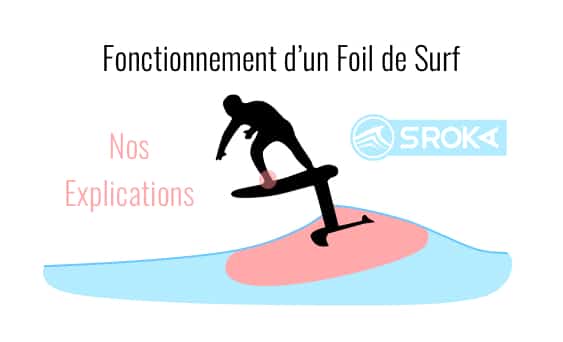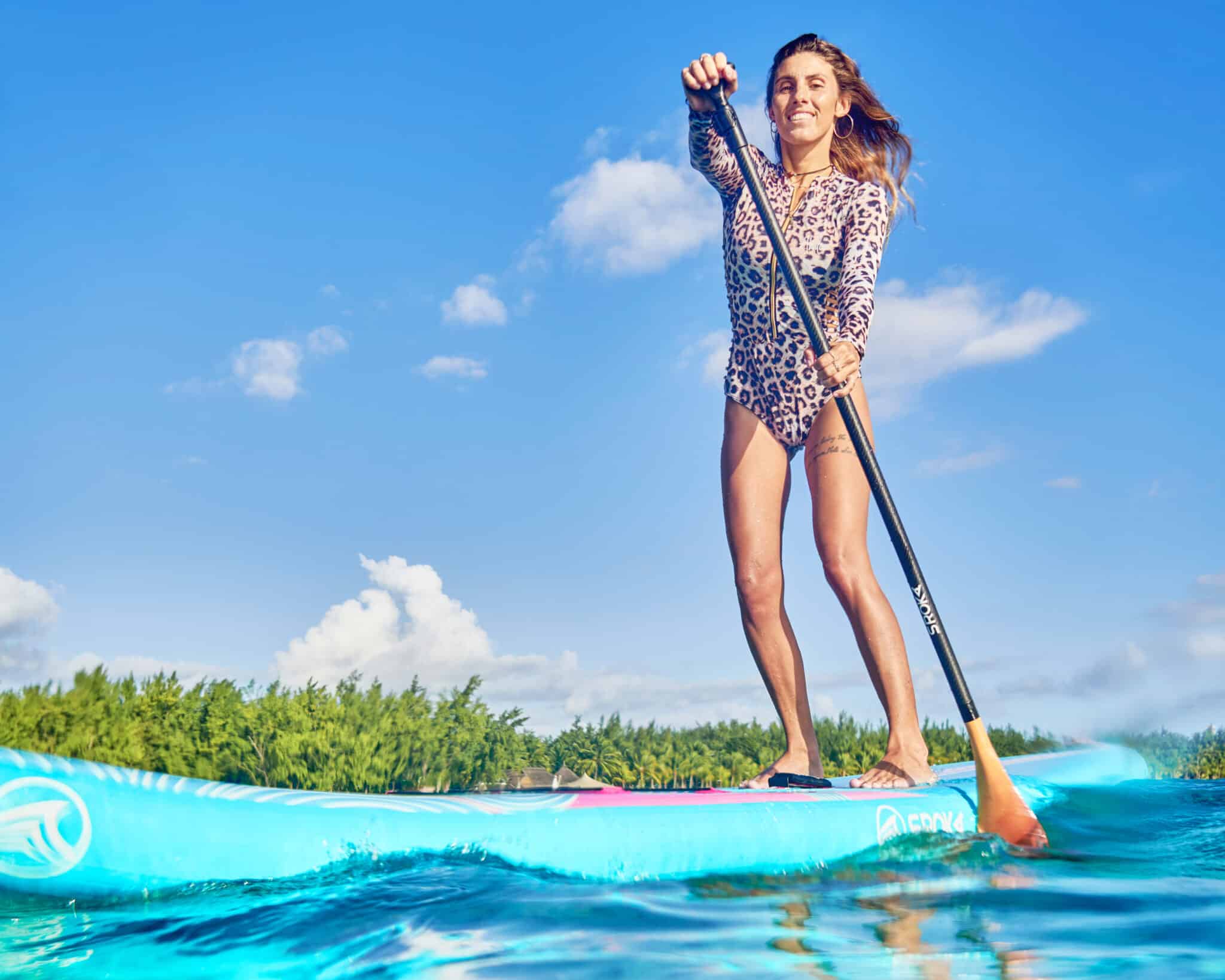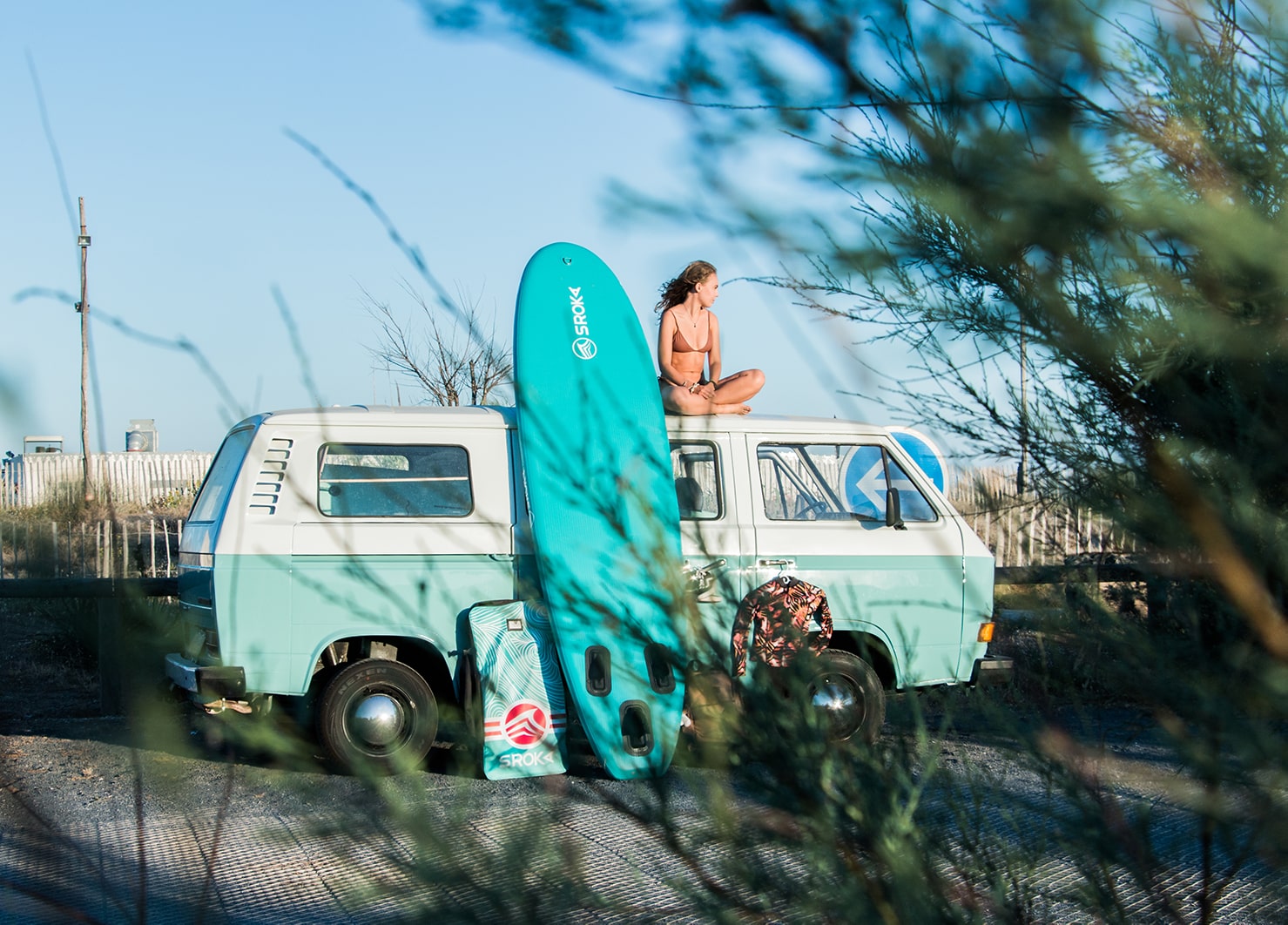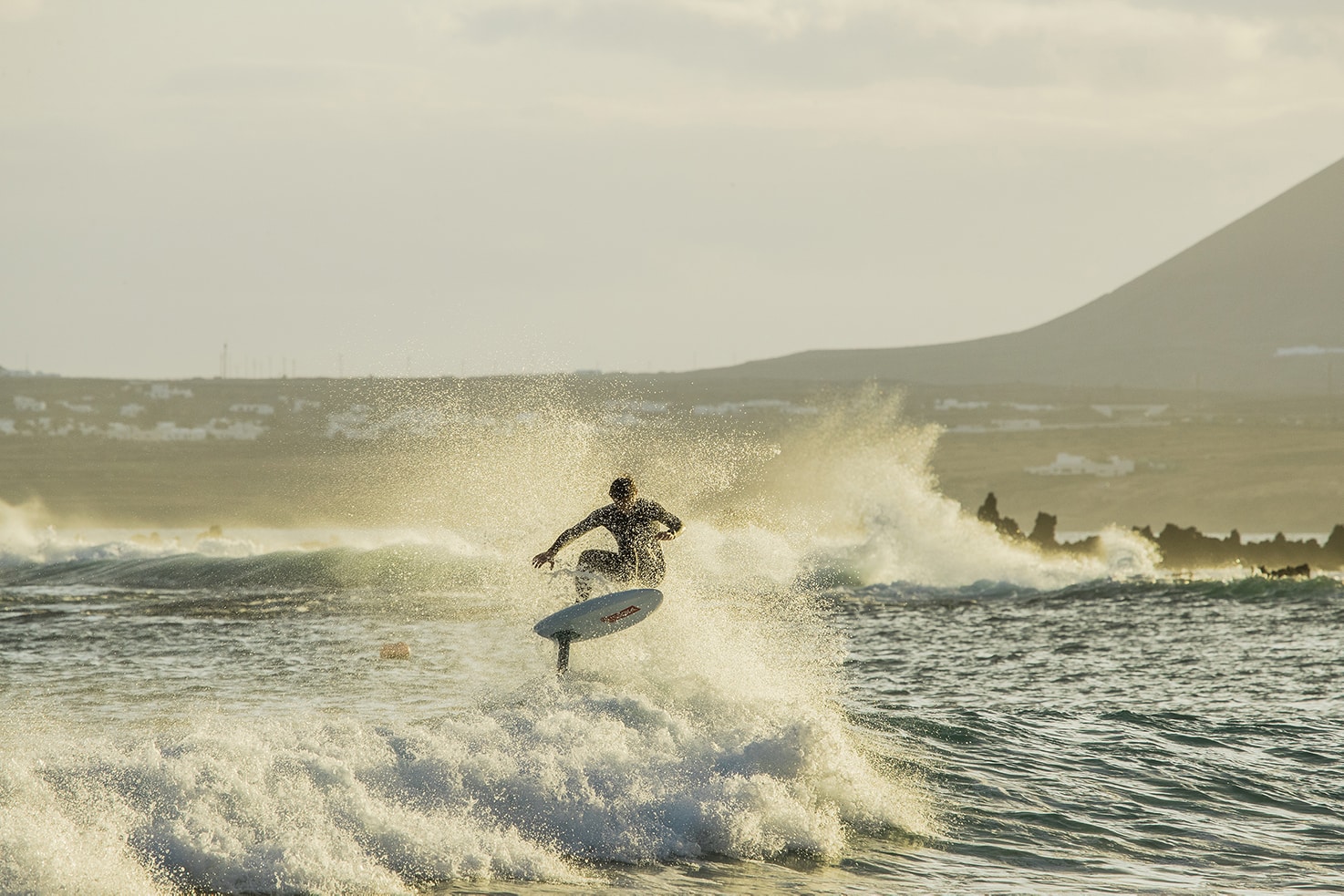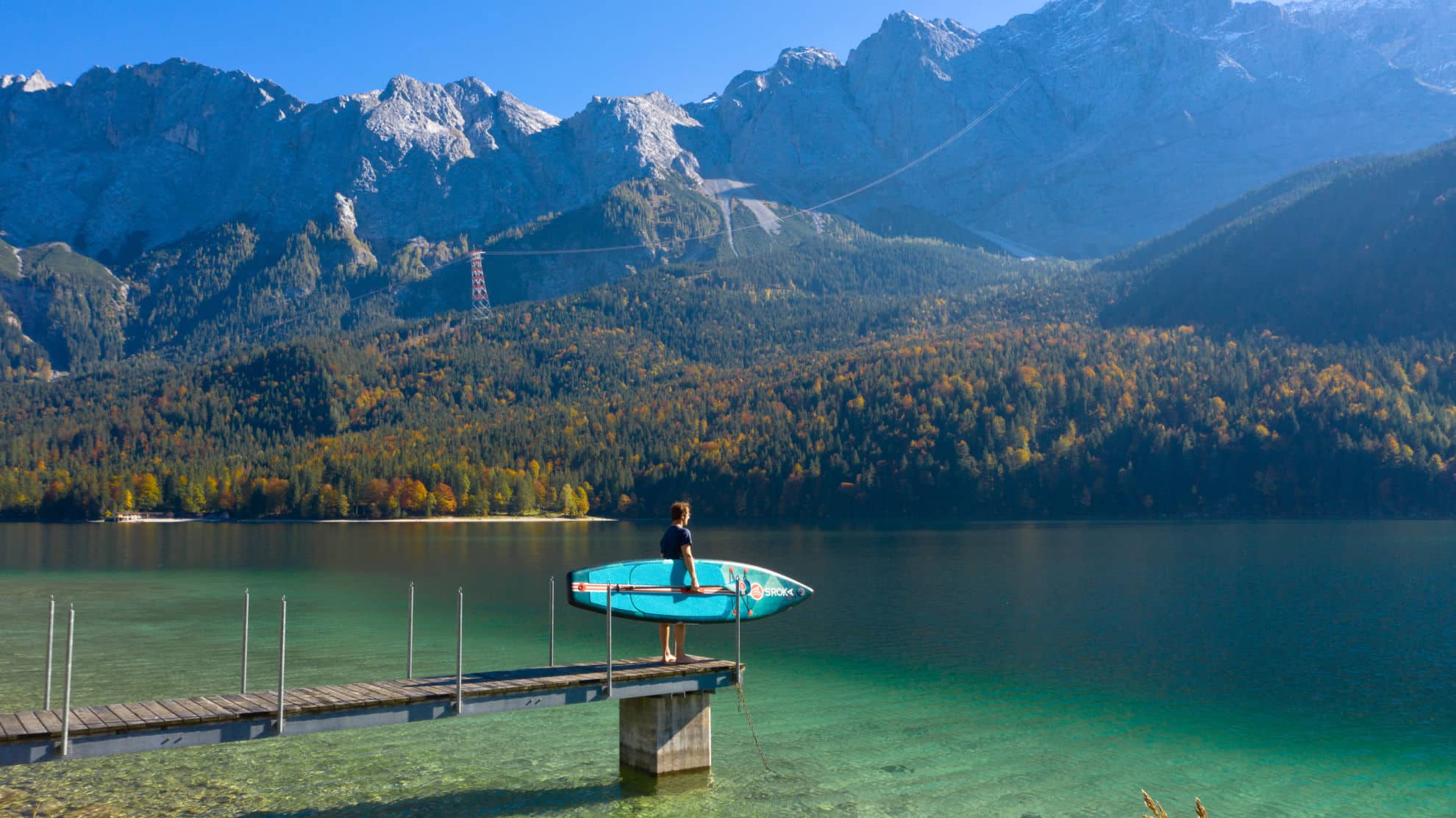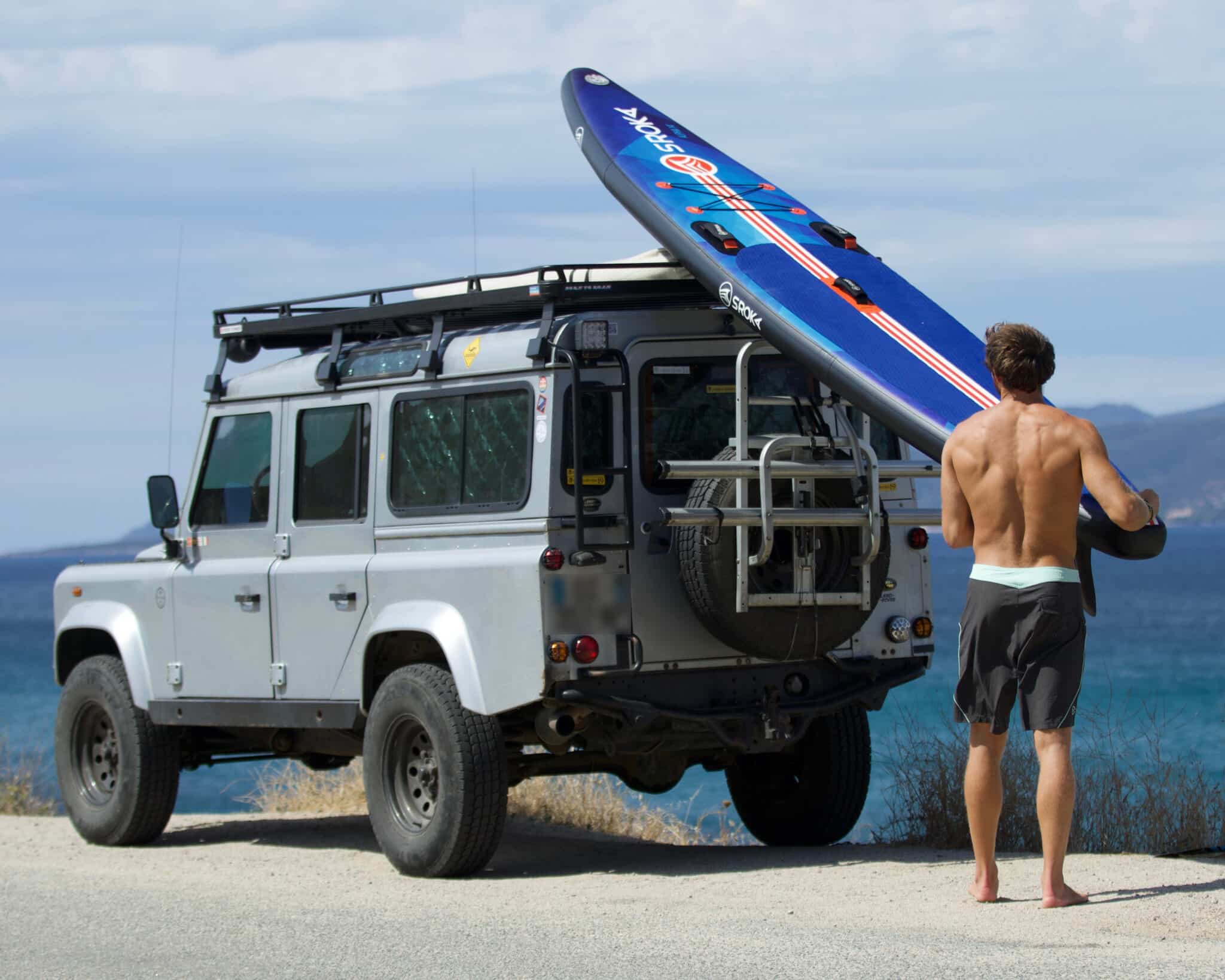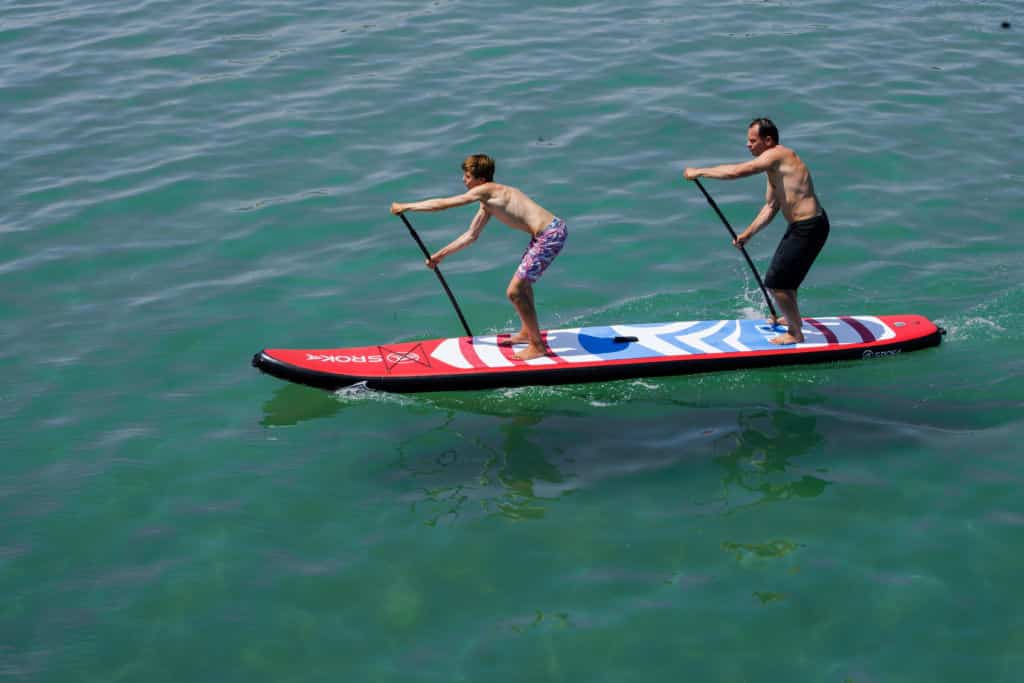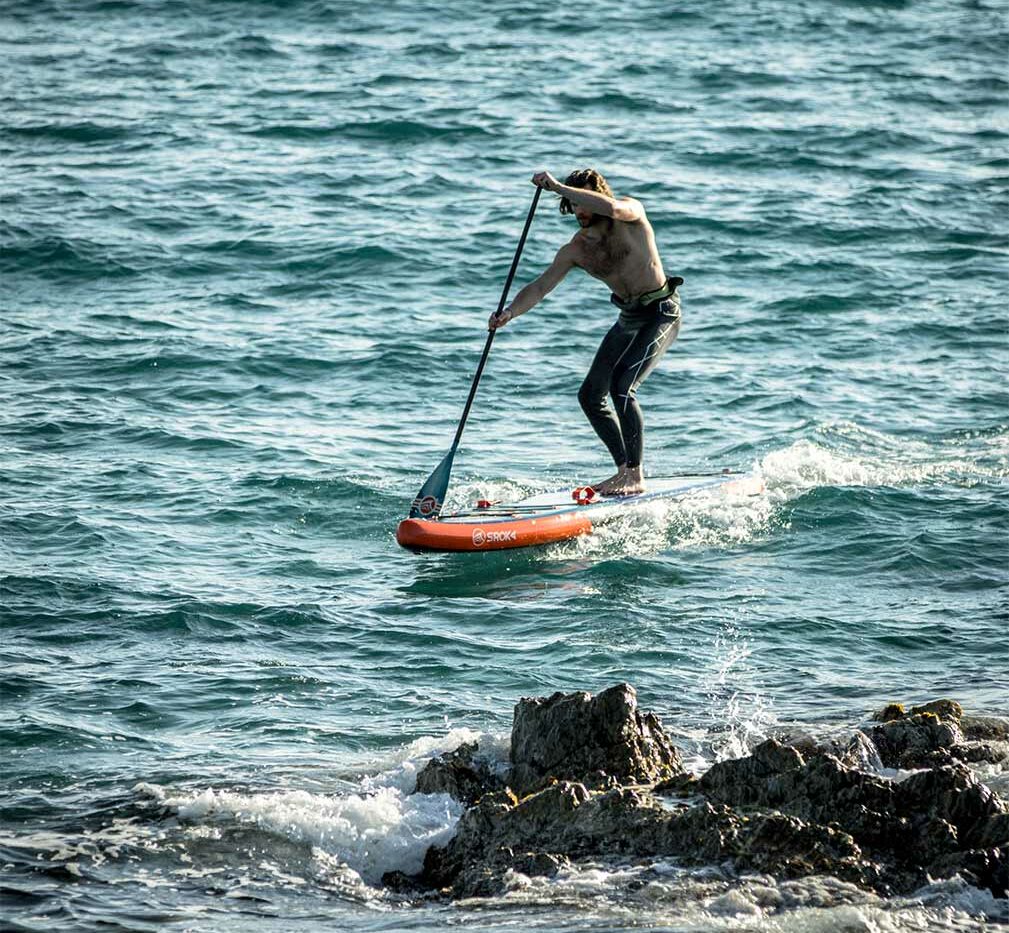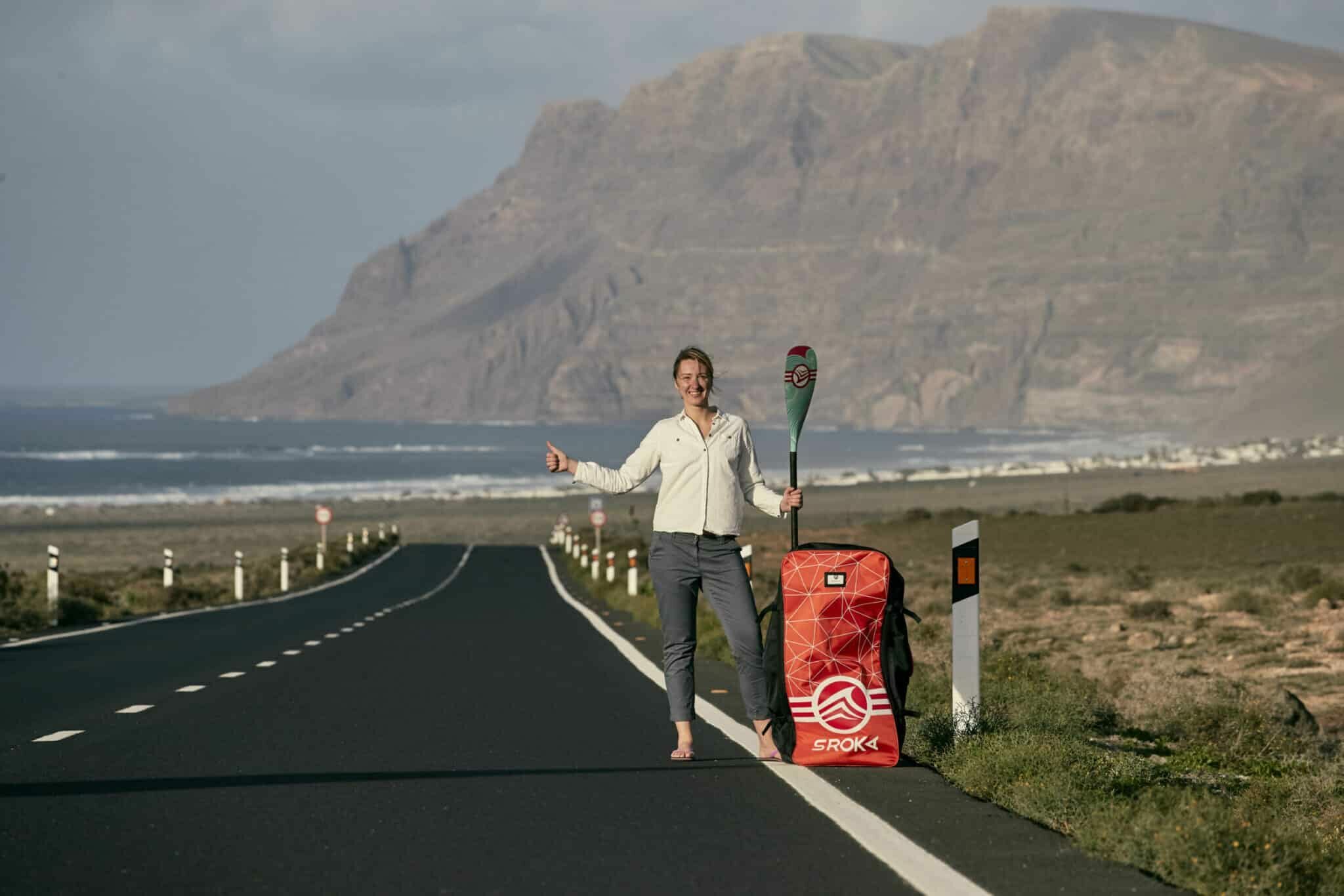 LE MAGAZINE
LE MAGAZINEWhich paddle for the ocean?

Which paddle for the ocean?
Stand-up paddling is a water sport in which you stand up on a board using a paddle. It can be practiced on different types of water, but the ocean offers a particularly varied and stimulating playground. Whether for strolling, surfing, hiking or racing, sea paddling lets you discover magnificent landscapes, enjoy the benefits of salt water and experience thrilling sensations.
But for ocean paddling, you need to choose the right equipment. In fact, not all paddles are suited to sea conditions, which can be changeable and challenging. So there are a number of criteria you need to take into account to find the ideal paddle for your ocean adventures.
In this article, we’ll give you tips and recommendations for choosing the best paddle for the ocean. We’ll also introduce you to the best brands and models of inflatable paddles for the sea, as well as the essential accessories for this practice. Finally, we’ll give you a few tips on how to practice stand-up paddling in complete safety, and point out the essential spots for stand-up paddling at sea.
What types of paddles are suitable for sea use?
There are two main types of paddles: rigid and inflatable. An inflatable paddle and a rigid paddle have many differences. However, in 80% of cases, an inflatable paddle is the wisest choice. In fact, it’s the ideal option if you’re looking for a SUP that’s multi-purpose (leisure, strolls, days at the beach, yoga…). A good-quality inflatable paddle will guarantee excellent performance and durability, while remaining affordable. Not to mention easy, convenient transport and storage. On the other hand, if you want to compete or surf big waves, a top-of-the-range rigid SUP will be more suitable.
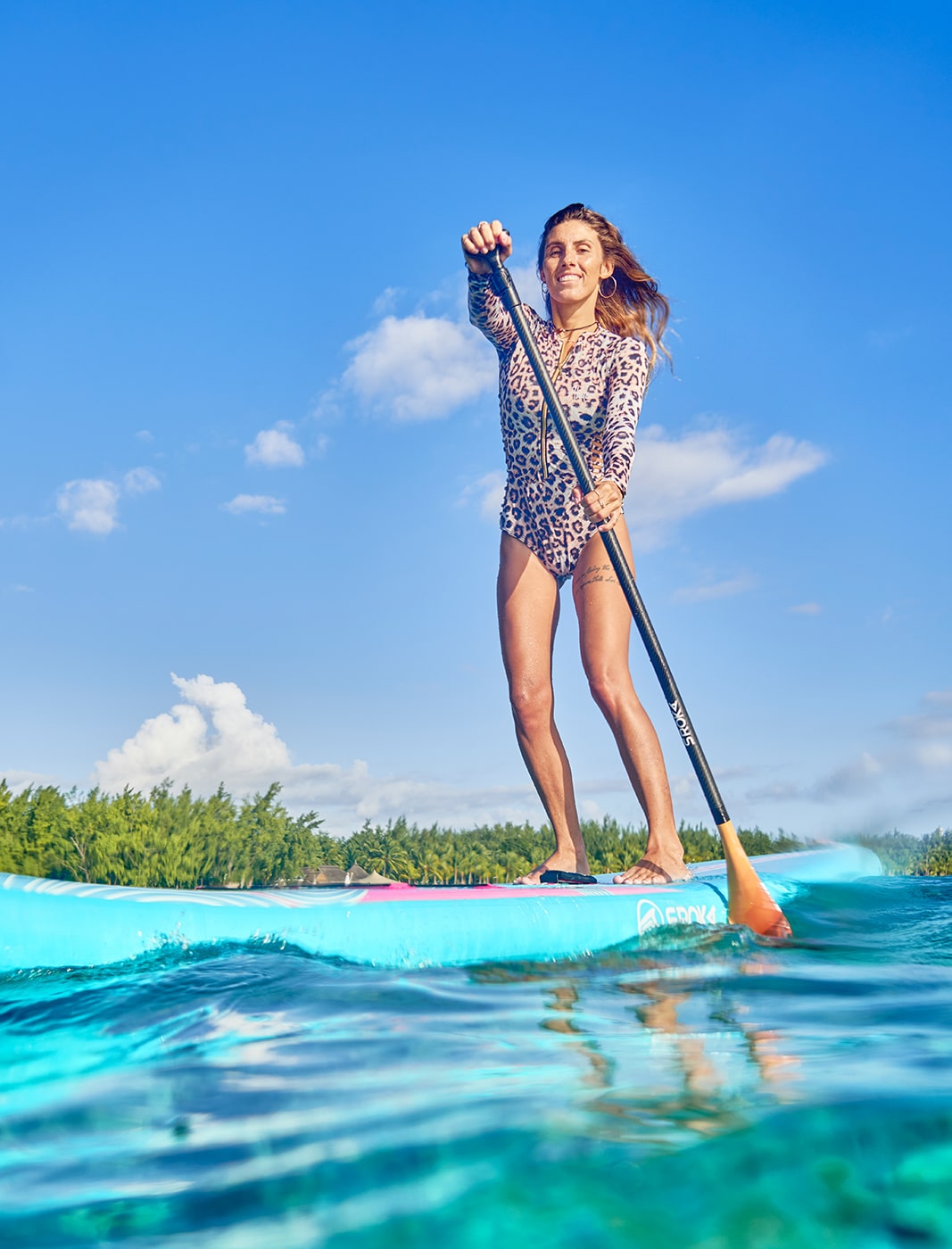
What are the differences between paddles designed specifically for the ocean and those for other types of water?
Paddles designed specifically for the ocean have special features that make them suitable for marine conditions. They differ from paddles for other types of water in shape, size, thickness and fin.
The shape of the paddle influences its stability, glide and maneuverability. Paddles come in a variety of shapes:
- The paddle surf: it has a short, wide shape, with a pronounced rocker (curvature) at the front and rear. It’s designed to ride waves and be agile in turns.
- The all-round paddle has a versatile shape, with a balance between length, width and rocker. It’s ideal for touring, surfing and hiking on both calm and rough water.
- The touring paddle has a long, narrow shape, with a low rocker front and rear. It’s optimized for glide, speed and comfort on flat or slightly choppy water.
- The race paddle: very long and narrow, with minimal rocker at the front and rear. Specially designed for speed racing on flat or rough water.
To choose the right form of paddle for the ocean, you need to define your objective: surfing the waves (paddle surf), leisurely strolling (all-round and touring paddles) or covering long distances (touring and race paddles).
The size of your paddle depends on your size, level and level of practice. In general, the longer the paddle, the faster and more stable it is, but the less manoeuvrable it is. The wider the paddle, the more stable and comfortable it is, but the slower and less responsive it is. The thicker the paddle, the stiffer and more supportive it is, but the closer it is to the water and the less sensitive it is to movement.
Paddle thickness affects rigidity, buoyancy and balance. In general, the thicker the paddle, the stiffer and more buoyant it is, but the closer it is to the water and the less sensitive it is to movement.
The paddle fin plays an important role in stability, steering and performance. There are several types of fin: the center fin, which attaches to the underside of the paddle at the center of gravity, ensures the paddle’s lateral stability and trajectory; the side fins, which attach to the underside of the paddle at the rails (edges), improve the paddle’s maneuverability and control in turns and waves; the rear fin, which attaches to the underside of the paddle at the stern, increases the paddle’s speed and responsiveness.

Criteria to consider when choosing a paddle for the ocean (stability, dimensions, materials)
As we’ve just seen, the choice of a paddle for the ocean depends on several criteria linked to the shape, size, thickness and fin of the paddle. But there are other criteria to consider when choosing an ocean paddle:
- Stability: the paddle’s ability to remain balanced on the water. It depends mainly on the paddle’s width, thickness and volume distribution. The wider and thicker the paddle, the more stable it is. The more volume is concentrated in the center of the paddle, the more stable it is.
- Dimensions: these are the paddle’s measurements in length, width and thickness. They are expressed in feet (‘) and inches (“). For example, a 10’6 x 32″ x 6” paddle measures 10 feet 6 inches long (approx. 320 cm), 32 inches wide (approx. 81 cm) and 6 inches thick (approx. 15 cm).
- Materials: these are the components that make up the paddle. They influence the paddle’s weight, rigidity, strength and price. The most solid constructions include: rigid fiber paddles, rigid carbon paddles and high-end inflatable PVC paddles (watch out for low-end PVC paddles that won’t hold up over time).
The best ocean paddles from Sroka Company
Our brand, Sroka Company, is a French brand created by Bruno Sroka, three-time world kitesurfing champion. We offer high-quality inflatable paddles, made from durable materials that will keep your paddle for years to come. Our paddles are suitable for all levels and practices, from surfing to hiking to yoga. Here’s a selection of our best ocean paddles:
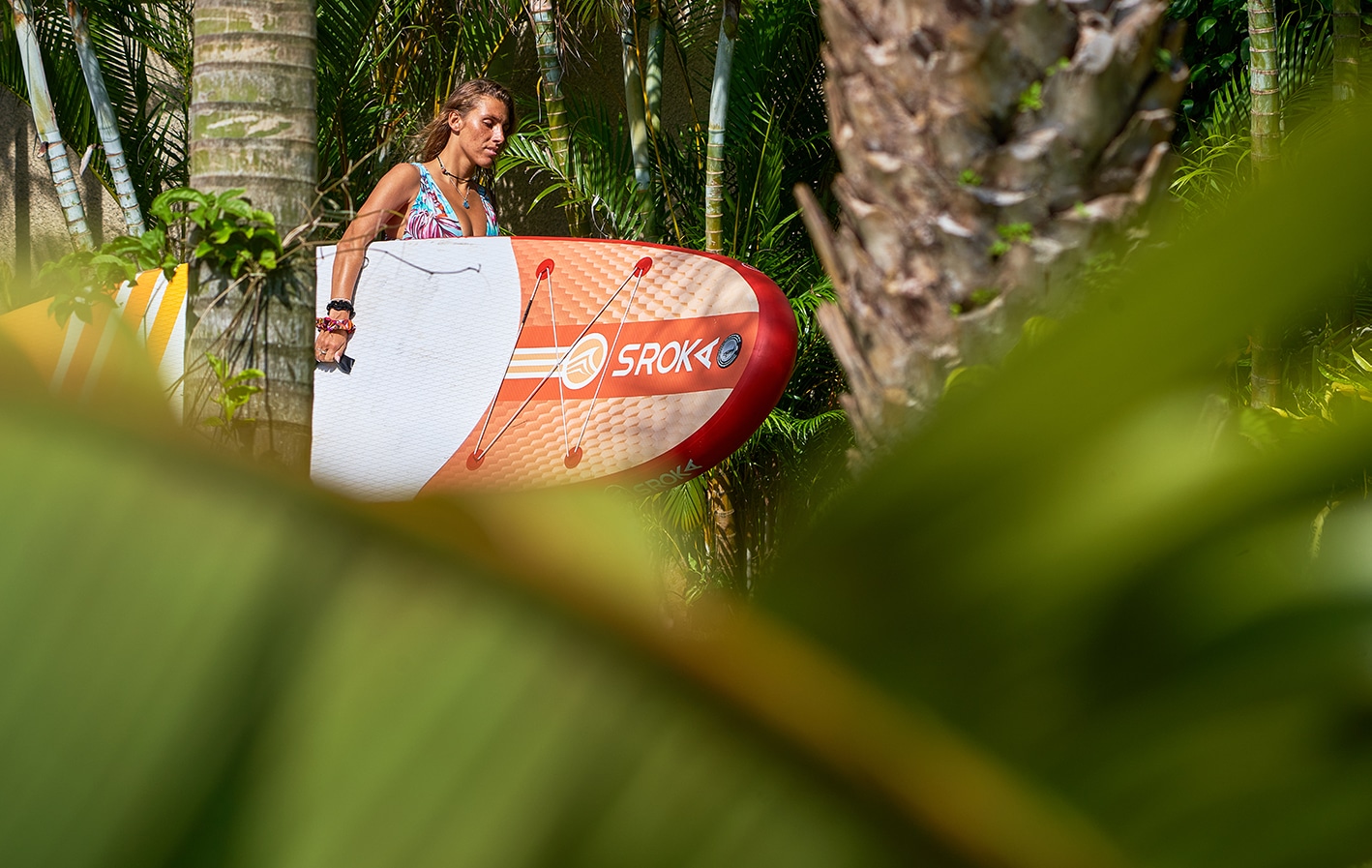
The Malibu
The Malibu is a versatile, comfortable all-round paddle, ideal for touring, surfing and hiking on calm or rough water. It has a wide, stable shape, with moderate rocker front and rear. It features a removable center fin and two fixed side fins. The Malibu is made of fused double-layer PVC to ensure solidity whatever your ocean ride.
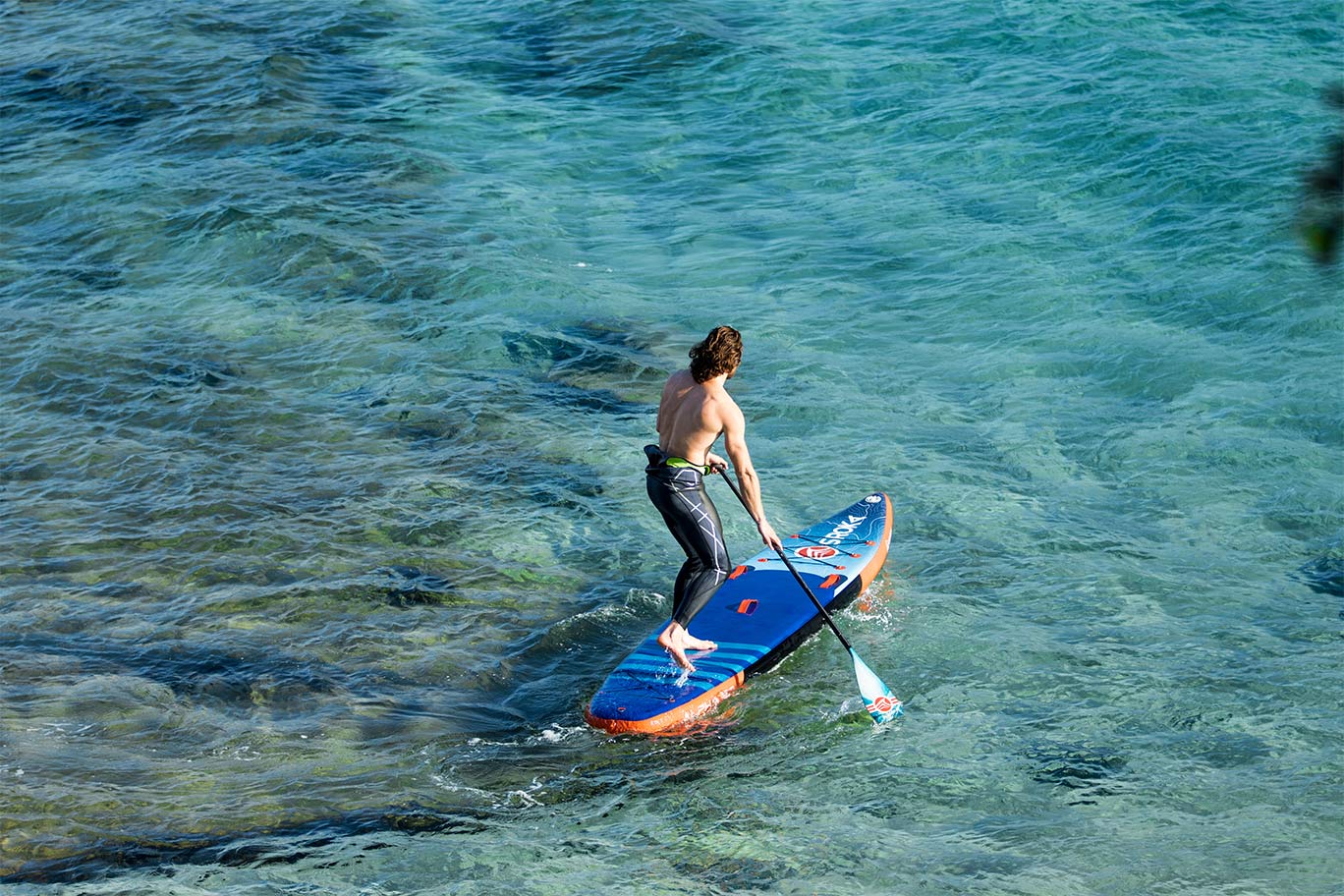
Aplha and Girly
The Alpha is a paddle halfway between touring and race paddles. Its slim profile makes for fast, efficient paddling without too much effort. Built with heat-welding technology and 3 layers of PVC on the rails, it offers excellent rigidity and optimal strength, making it the ideal choice for long ocean rides.
The Girly, meanwhile, has the same technical features as the Alpha, but with a refined design that combines glide and elegance.
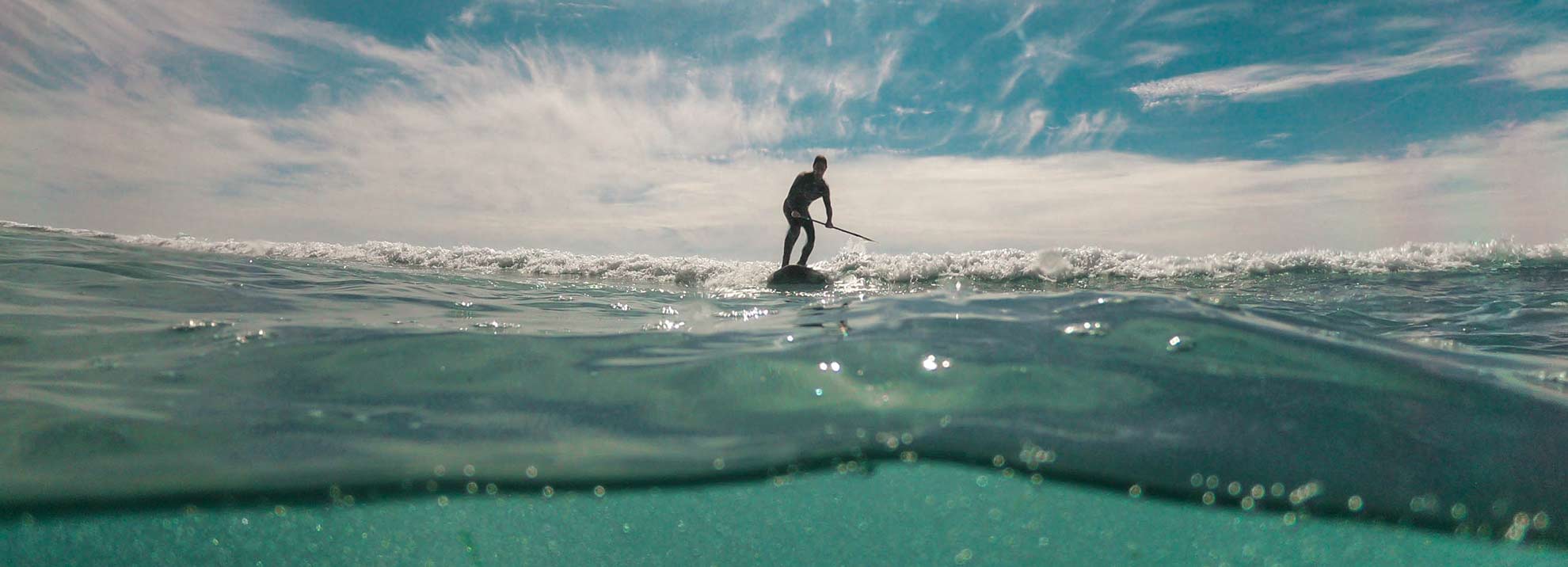
The Wave 9’5
The paddle surf inflatable Wave 9’5 is designed to help you discover the joys of surfing. It’s a short board with a rounder outline, making it easier to turn on the wave. Thanks to its Fusion technology construction, this paddle is light and stiff, which is a major advantage when surfing waves. It’s the perfect compromise for getting around and discovering surfing in small waves. This inflatable SUP is suitable for beginners and advanced surfers alike.
A guide to essential accessories for stand-up paddling at sea
To get the most out of stand-up paddling at sea, proper preparation is essential. The unpredictable and potentially dangerous elements of the sea require appropriate precaution and protection. Here’s a list of essential accessories for a safe and rewarding stand-up paddle experience at sea:
- The leash: This device, attached to the paddler’s ankle or calf, maintains a constant connection with the board. In the event of a fall, the leash prevents the paddle from being lost, and makes it easier to hang on when needed, whether due to fatigue or currents.
- Lifejacket: Ensures buoyancy in the event of immersion. It is strongly recommended for minors and beginners. However, it’s advisable to have one whatever your level, as no one is safe from a change in the weather that makes practice difficult.
- Wetsuit: protects against cold, UV rays, abrasion and injury. It’s particularly advisable to wear one when paddling in the ocean, especially in winter or in areas with cooler temperatures.
- The waterproof bag: Having a waterproof bag is very practical for storing and protecting personal effects such as phone, keys, water, food, etc.
- The pump: the pump is essential for inflating and deflating the inflatable paddle board, allowing you to adjust the pressure to suit the conditions of use.
Our advice on how to practice safely
Stand-up paddling at sea is a sport that requires a certain amount of vigilance and preparation. To avoid accidents and unpleasant surprises, a few safety rules must be observed:
- Check the weather: before heading out to sea, check the weather forecasts (wind, swell, tide, etc.) and choose a spot suited to your level and objective.
- Informing someone: before setting off, you need to tell someone (family, friend, club, etc.) about your trip, its duration and your phone number.
- Wear the right equipment: before heading out to sea, you need a leash, a lifejacket, a wetsuit and a waterproof bag containing safety items (whistle, lamp, survival blanket, etc.) and the best inflatable paddle for the sea.
- Respect navigation rules: when navigating, respect authorized zones, priorities, safety distances and signals.
- Stay alert : while sailing, you need to be aware of weather conditions, currents, waves, obstacles and other users.
- Knowing how to give up: while sailing, you need to know how to assess your limits and those of your equipment, and not hesitate to turn back or ask for help if you run into problems.
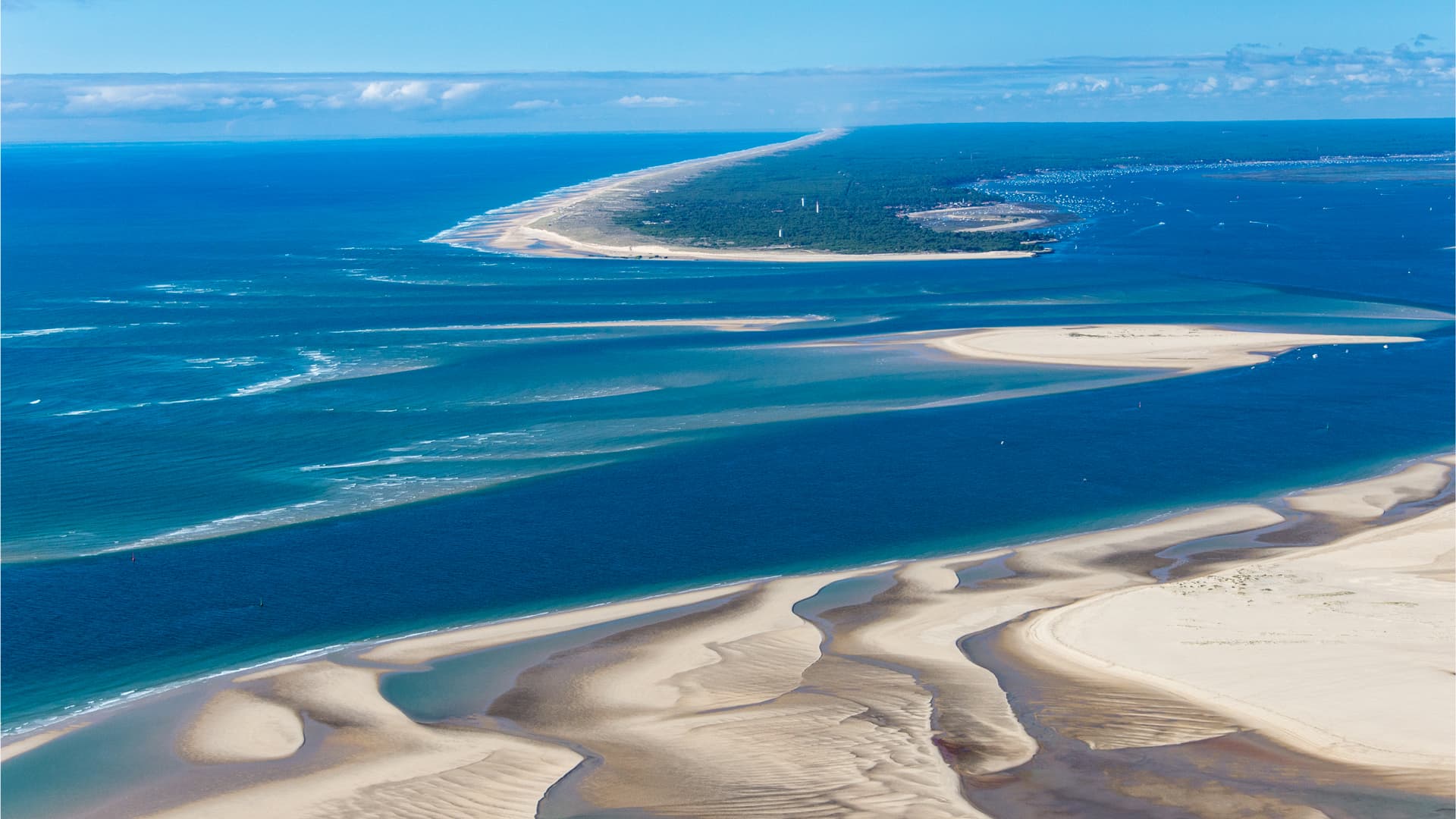
The 4 best places to stand up paddle at sea
Arcachon Bay
A true haven for strolling, surfing or hiking. You’ll marvel at the view of the Arcachon Basin, Cap Ferret, Ile aux Oiseaux and the majestic Dune du Pilat. An abundance of biodiversity awaits you, with a rich variety of flora and fauna.
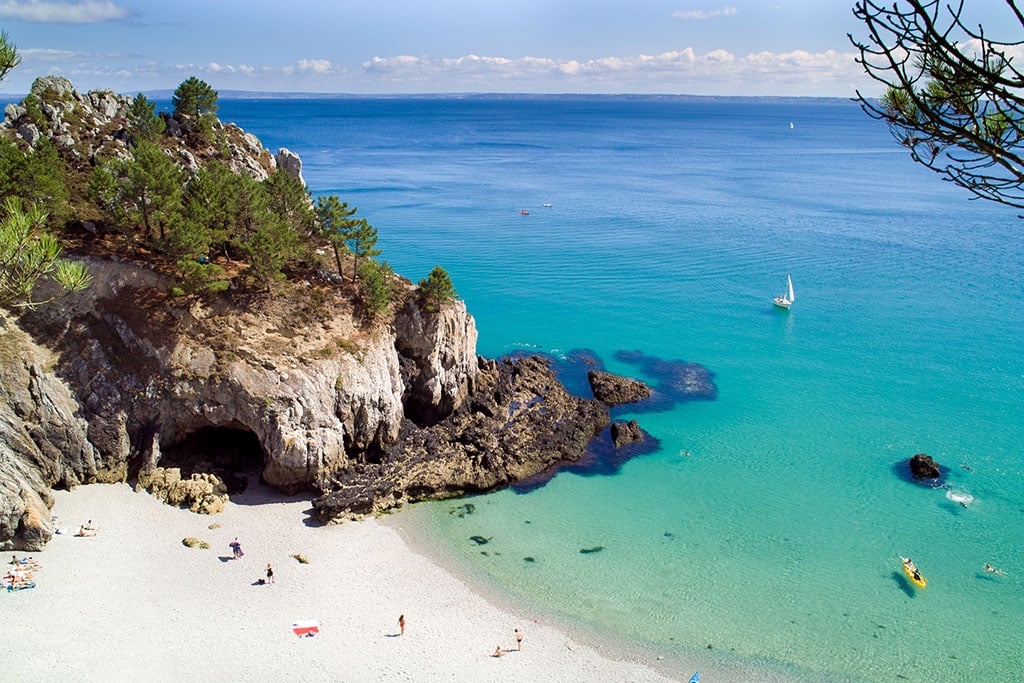
The Crozon peninsula
It’s the perfect place for surfing or hiking. You’ll enjoy top-quality waves, wild and heavenly panoramas and exceptional sites such as the Pointe de Pen-Hir, the Pointe du Raz, the Virgin Island (see photo) and the mysterious sea caves.
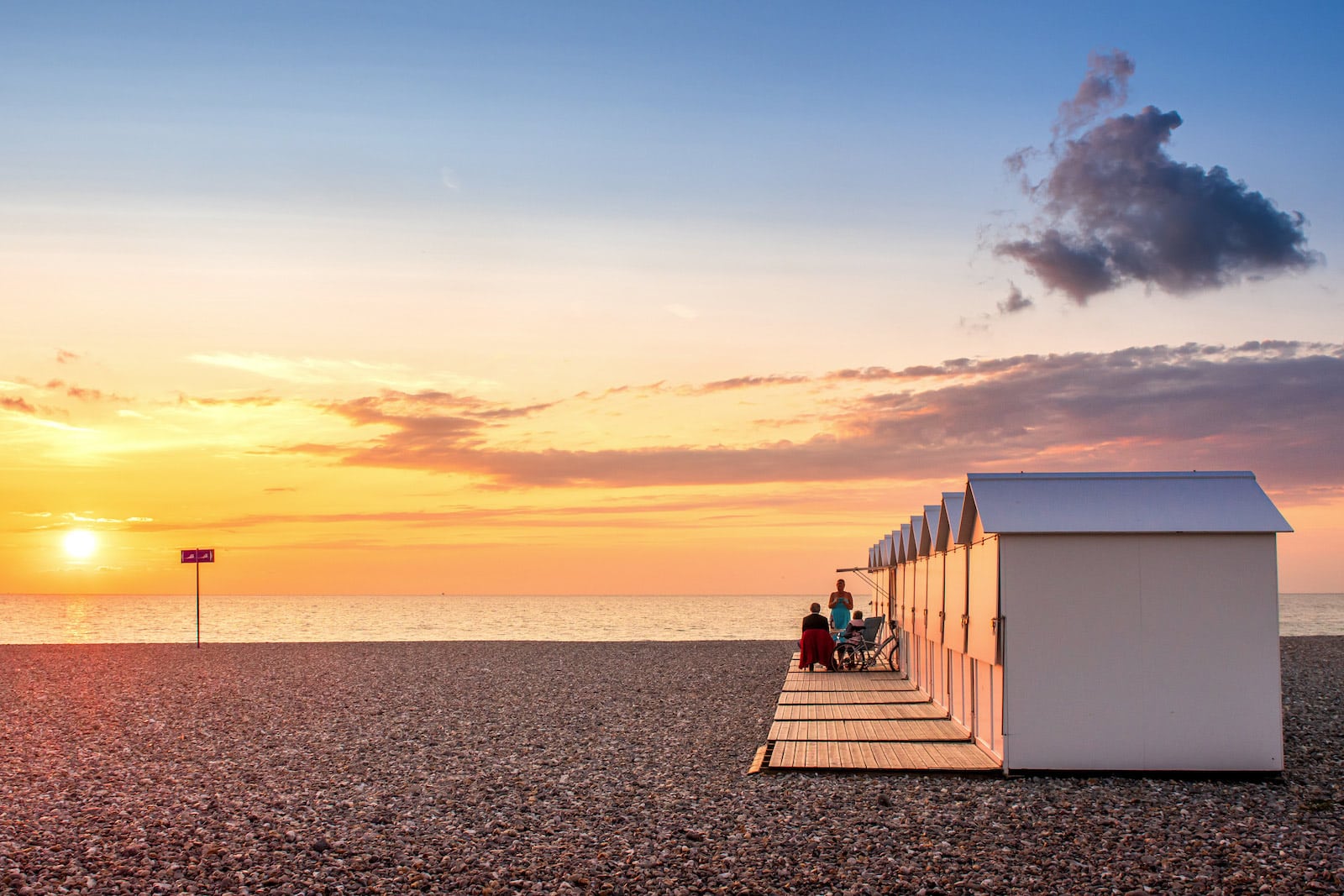
The Somme Bay
It’s the ideal place for a walk or a hike on the sea. You’ll discover the Baie de Somme regional nature park, the charming villages of Le Crotoy and Saint-Valery-sur-Somme, and the Marquenterre bird sanctuary. Seals, birds and horses dot this uniquely beautiful landscape.
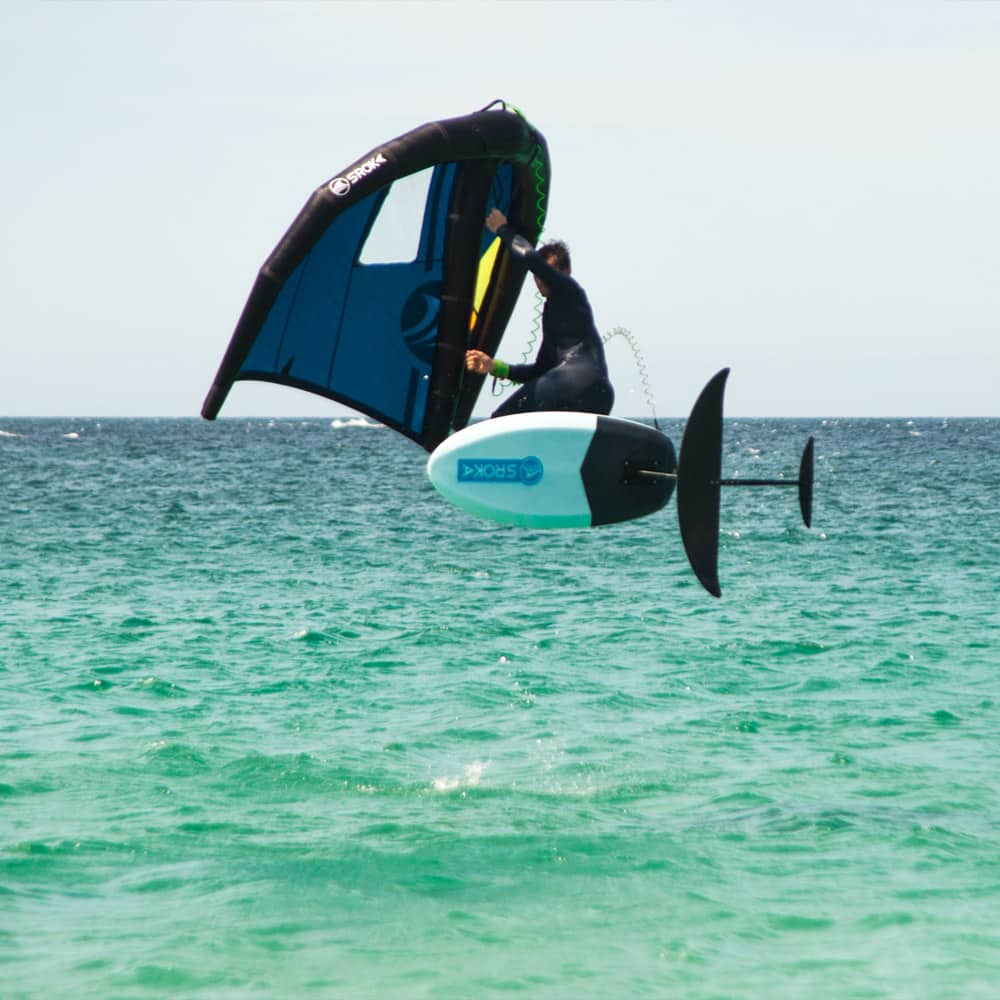
The Côte d’Azur
A true paradise for strolling or hiking at sea. Enjoy the Mediterranean climate, crystal-clear waters and iconic towns such as Nice, Cannes and Saint-Tropez. Also worth exploring are the islands of Lérins, Porquerolles and Port-Cros.
Our favorite paddling spot? The calanques of Cassis. Departing from Cassis beach, the calanques are easily accessible by paddle, so you can move from calanque to calanque admiring the beauty of the coastline.
Stand-up paddling opens the door to a myriad of benefits and pleasures as a water sport. It’s a great way to exercise, relax, have fun and explore corners of paradise. However, to enjoy paddling at sea to the full, you need to choose your equipment wisely and follow the safety rules in a relaxed manner. We sincerely hope that this article has shed some light on your quest for the ideal paddle for your future sea escapades.
 Le Magazine
Le Magazine



